Note: This review has been updated from the original version and given a final score.
The Legend of Zelda: Skyward Sword is the only game in the series that I started and never finished. When I first played it on the Wii, I was not in love with its motion controls, but I powered through and reached the final boss. That’s when the motion controls truly tested my patience. For reasons I can’t quite remember, considering it was a decade ago, I found that fight truly impossible. After what must have been a couple dozen tries, I simply surrendered to the fact that I would never master the controls enough to beat Skyward Sword and put it out of my mind forever. Or so I thought.
I guess I should have anticipated that Nintendo would release an HD version of Skyward Sword, considering the company has done the same for each of its 3D Zelda titles, and the Switch’s Joy-Con gyro controls offer the perfect platform for the game’s control system. But, for some reason, I was kind of surprised. In my mind, Skyward Sword was always the odd one out. By 2011, the formula for 3D Zelda games was becoming stale, and the motion controls didn’t do anything to change that. It was the exception to the rule that Zelda games were almost universally beloved.
Looking back on it, with a decade of experience under my belt, this evaluation seems absolutely insane. Before Skyward Sword, there were only four other 3D Zelda games in 13 years, and all of them had relatively unique settings and structures. Sure, they all required players to pretty much do what they’d been doing since the original Legend of Zelda in 1986: Go to a dungeon, get the item you need to complete that dungeon, then find the next dungeon, and so on. But between those moments, the 3D Zelda games showcased their individual identities, both structurally and mechanically. Ocarina of Time was in 3D and included aspects of time travel; Majora’s Mask had you rushing to accomplish tasks before the world ended and reset; Wind Waker let you loose on a massive ocean to explore to your heart’s content; Twilight Princess let you turn into a wolf. They were all very different experiences.
Compared to its predecessors, the only twist on the 3D Zelda formula that Skyward Sword offered was its gimmicky motion control scheme, which never felt like enough to me. Actually, it felt like a hindrance. At least, that’s how I remembered it.
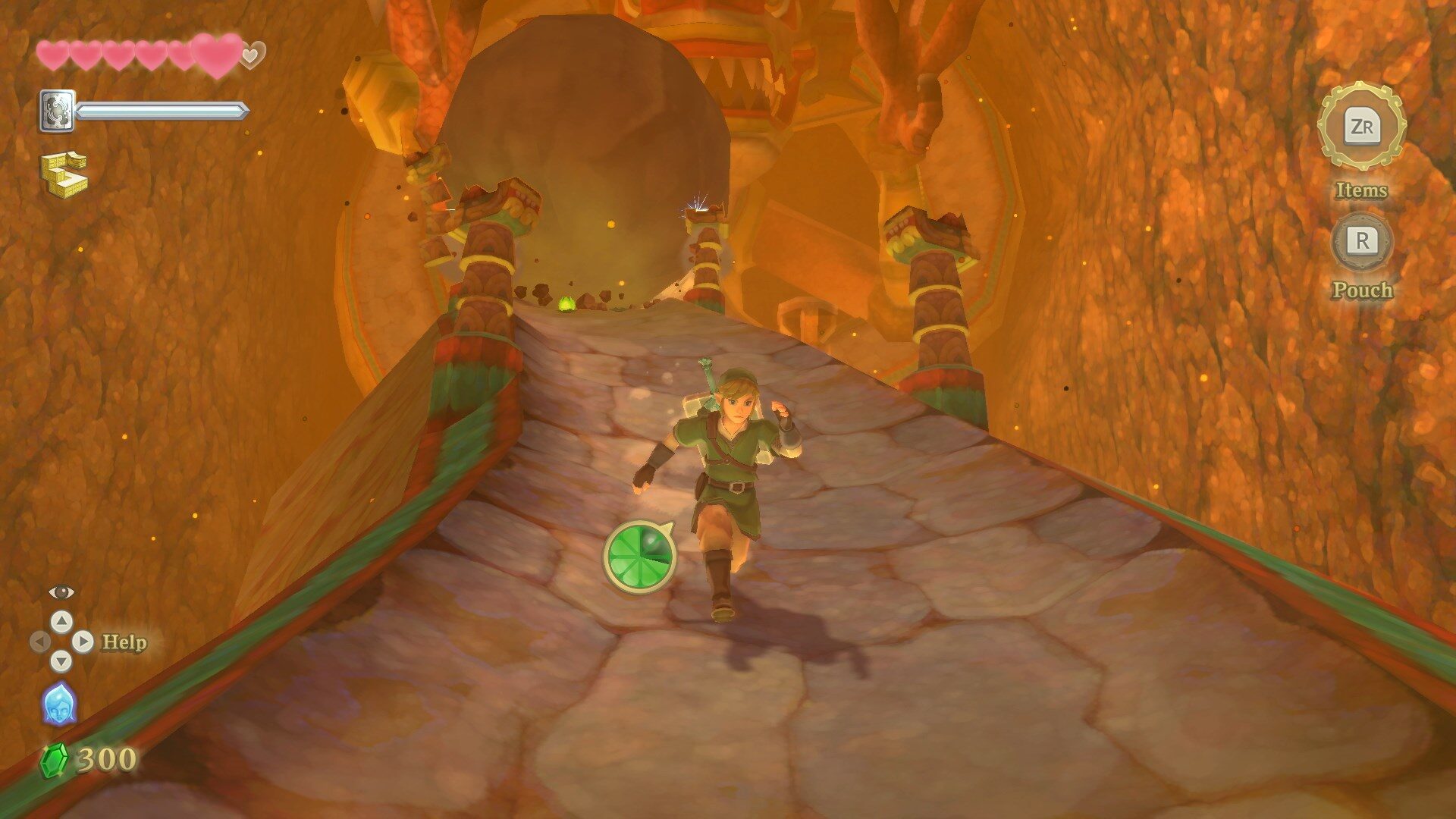
But now, playing the game again after 10 years with an HD remaster and a fresh perspective (not to mention Breath of the Wild to break the monotony), Skyward Sword is much, much better than I remember. It’s not just because the motion controls are more refined, or that you don’t even need to play with the motion controls if you don’t want to, or that playing the game with HD graphics at 60 frames per second is an undeniably more pleasant experience. No, what I’m seeing for the first time is that the game that was already there—the level design, the overarching structure, even the writing—was great all along.
Not that it matters much, but Skyward Sword is technically the “first” Zelda game in the series’ official timeline and takes place after the goddess Hylia sealed away the evil on the surface and moved humans to the skies to protect them. However, an evil force abducts Zelda, leaving it up to Link (or whatever you decide to call him) to travel to the surface and discover his fate as the chosen hero.
Compared to its predecessors, Skyward Sword’s main story is simple, but that tracks with the fact that it’s meant to be an origin story of sorts. It doesn’t have a compelling companion character like Midna or the swashbuckling sense of adventure that Wind Waker has, but it does work as a sort of “starting point” for the series’ main tropes. We see the forging of the Master Sword, the manifestations of the three goddesses, and the reason why Link’s always wearing a green tunic and nightcap. Positioning the last pre–Breath of the Wild Zelda game as an origin story is an interesting choice that I don’t think I fully appreciated during its original release.
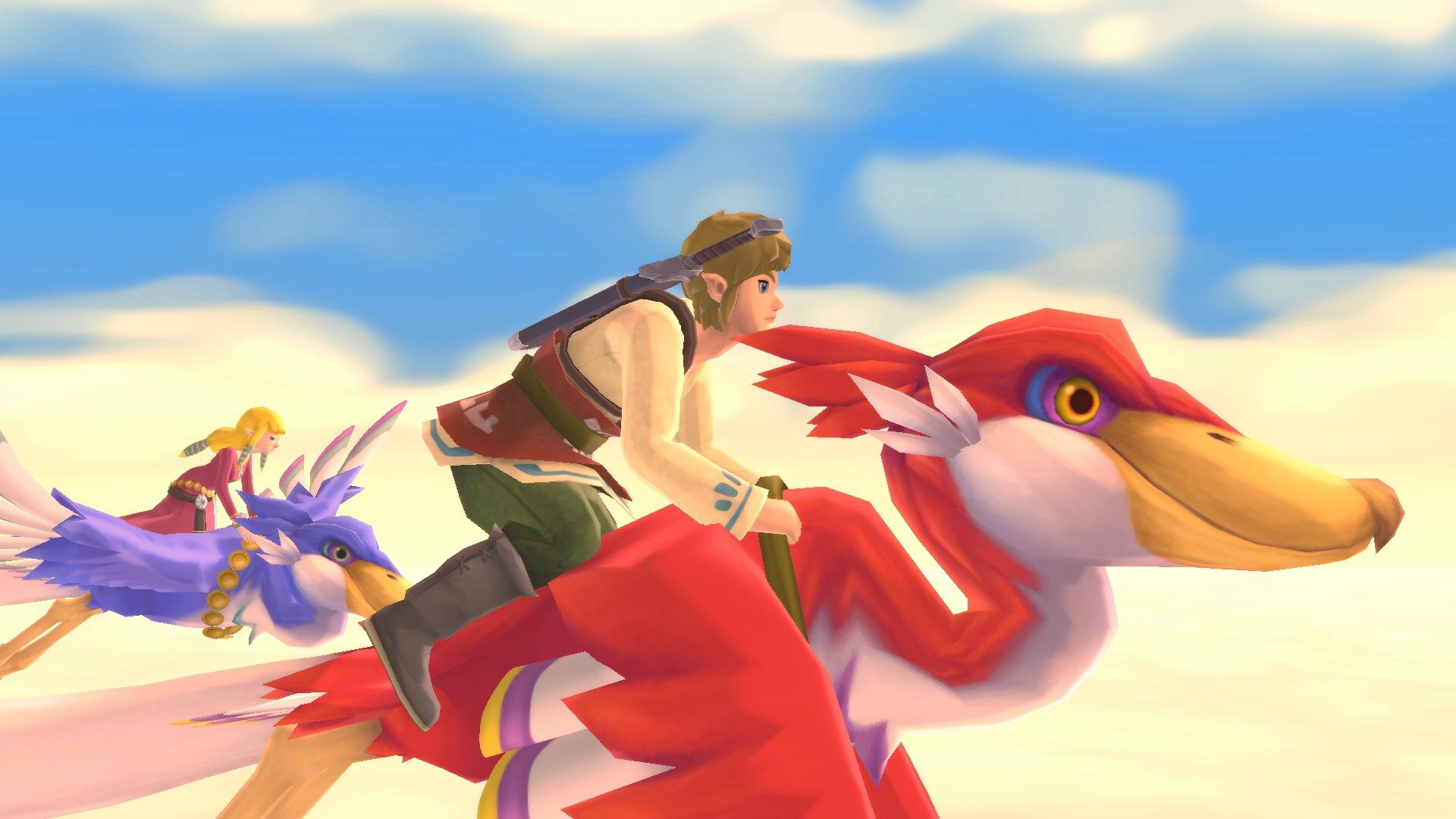
But what I really underestimated the first time around was Skyward Sword’s script and supporting cast. While there are fewer of them than in previous games, the characters here are, for the most part, funny and full of personality. I think the Zelda games have always been good at skating around the edges of depth with quirky, memorable characters, but Skyward Sword’s really stand out. Whether it’s Link’s egocentric rival for Zelda’s affections, Groose, or the flamboyant and narcissistic “Demon Lord” Ghirahim, the game’s writing really brings these characters to life. It’s a damn shame that Nintendo wasn’t voicing Zelda characters by this point, because many of them deserve performances.
Of course, the story and writing in Zelda games have always been ancillary to the puzzles and level design, as well as their overall worldbuilding and sense of scope. It’s been a while since I played a traditional 3D Zelda game, but as far as I’m concerned, Skyward Sword has some of the best dungeon designs in the franchise’s history. Playing through them again in Skyward Sword HD, there wasn’t a single dungeon that felt like a chore. For the most part, the puzzles are fairly straightforward though still clever, and use the game’s “new” (at the time) mechanics—both its motion controls as well as its stamina gauge—to craft interesting challenges. Same goes for the segments leading up to the dungeons, whether they take place on a time-bending skiff or on a sloping, fiery mountain.
The effectiveness of Skyward Sword’s level design has definitely benefited from an influx of massive open-world games over the years, including Breath of the Wild. Back in 2011, especially compared to the more epic vistas of Wind Waker and Twilight Princess, I could see Skyward Sword’s smaller, more contained levels feeling a bit slight. But after suffering through a decade of needlessly expansive maps and unending side quests, Skyward Sword’s more intimate settings are a breath of fresh air. That a decade-old game can feel refreshing because of its limitations is one of the most interesting revelations of playing through the game again on Switch.
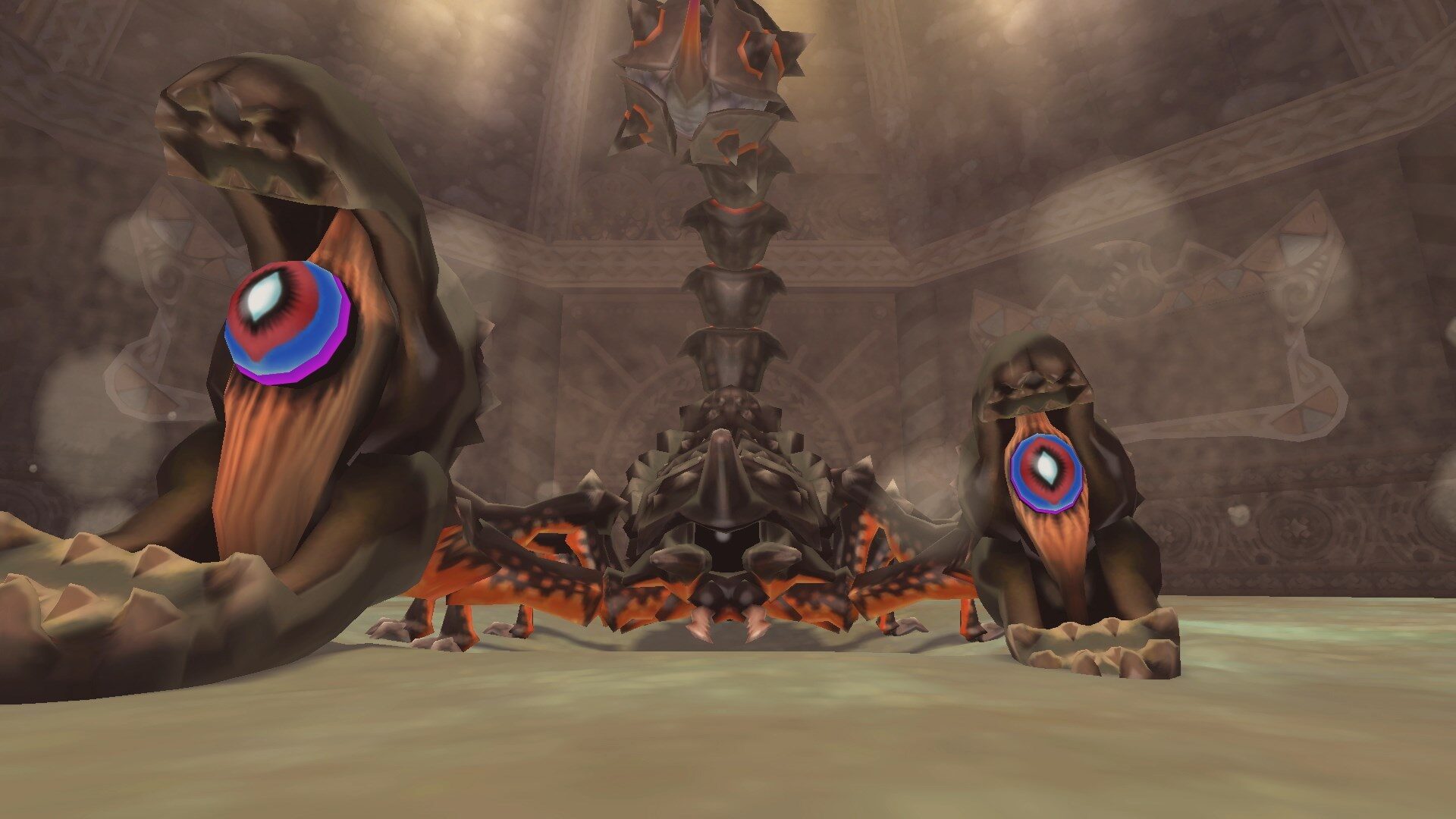
Maybe “limitation” isn’t the right word. Skyward Sword’s maps are more linear in design, but there’s a real diversity of experiences on hand. Sure, the sky as an overworld might be a little barren compared to Wind Waker’s sea, but it’s still cool to fly through it on the back of a giant shoebill. Eldin Mountain might seem like an anthill compared to the undulating terrain of Breath of the Wild’s Death Mountain, but it still has fun and varied gameplay moments, like running uphill while Bokoblins throw boulders down at you. And don’t even get me started on the minecart rollercoaster in Lanayru or the zombie-infested caves underneath Lake Floria. Skyward Sword’s levels might be smaller in scope, but they certainly don’t lack in personality or fun gameplay moments.
I might just be gushing over stuff that was in the original game, but I don’t want to undersell just how much Nintendo giving Skyward Sword the HD treatment enhances the overall experience. Whether it’s the graphics, the new button controls, the enhanced motion controls, or all the little quality-of-life changes that Nintendo made, Skyward Sword HD is definitely the best way to experience the game.
First off, there are the pure numbers of what an HD remake means. Going from the Wii’s 480p output at 30 FPS to the Switch’s 1080p (at least when it’s docked) at 60 FPS is an unspeakably massive difference, even if nothing about the actual assets is any different. There are some blocky, polygonal, or mushy textures here and there, but given the game’s pastel, storybook art style, it could almost pass as a new game. More importantly, the enhanced frame rate makes it feel modern. The enemies are easier to read and thus parry, and the motion controls surely benefit from having more inputs per second. In a next-gen world of FPS boosts, the 60 FPS that Skyward Sword HD offers is essential.
Then there are the improved controls, which go a long way in correcting the original version’s biggest problems. When it comes to the motion controls, they simply feel better and more responsive. Whether due to the increased frame rate or the Joy-Con’s gyroscope, the results are motion controls that I—and I can’t believe I’m saying this—didn’t mind using. Another major improvement is the ability to freely control the camera with the right stick when using motion controls. It’s hard to believe that the original didn’t include a free camera, but Nintendo hasn’t always had the greatest reputation with in-game cameras anyway (hot take: they should have fixed the camera in Super Mario 64 for the 3D All-Stars re-release). This is a major oversight that Nintendo has corrected for the HD version.
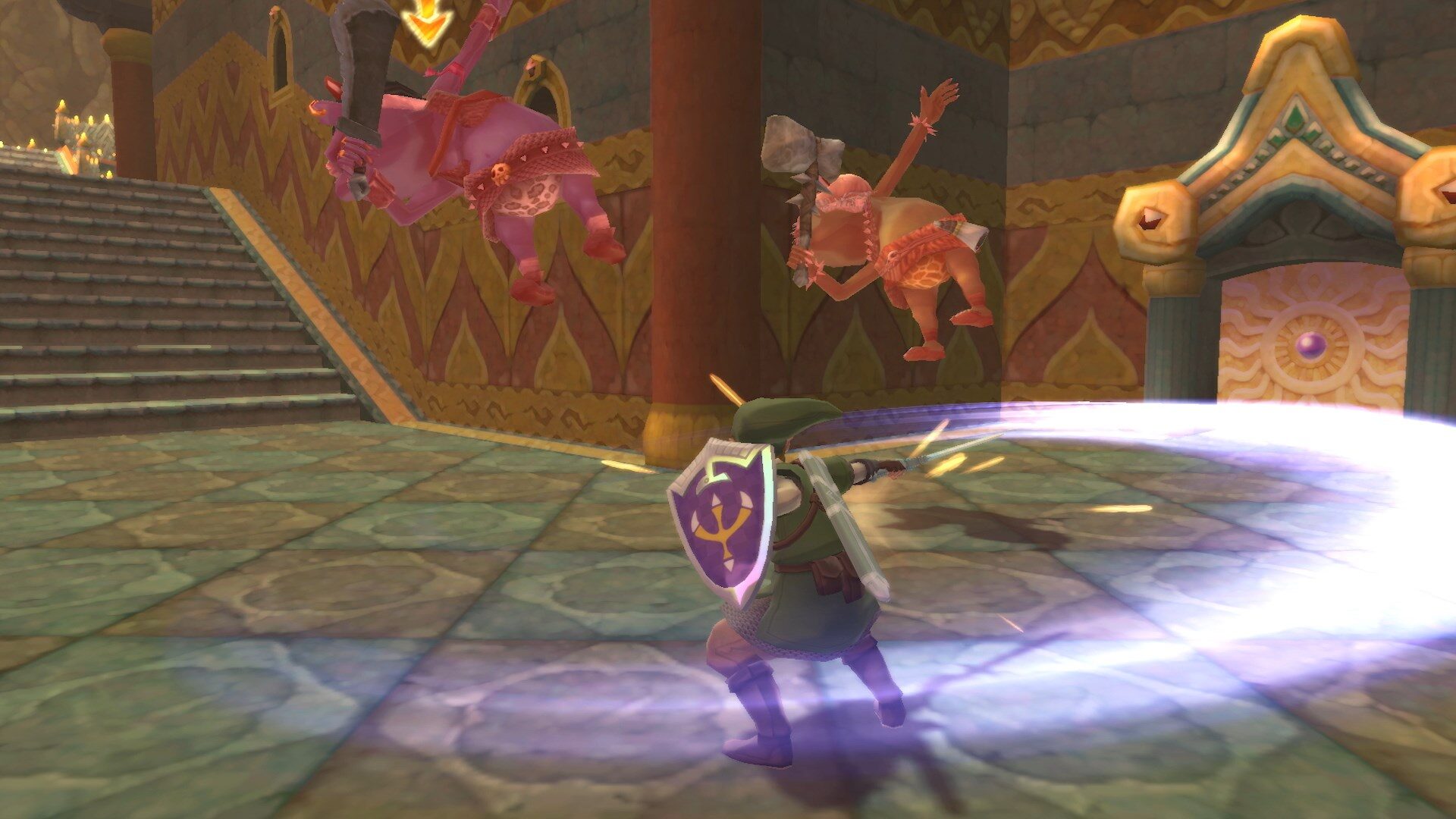
Perhaps the biggest addition to Skyward Sword HD, however, is the new button controls. Obviously, Nintendo needed to offer something besides just motion controls, considering how many people use the Switch as a handheld, not to mention the game is also playable on the strictly handheld Switch Lite. Given how much I generally despise motion controls, it was the feature I was most excited to check out.
I’ll be completely transparent here: For the first 15 hours, the buttons-only mode was completely unplayable for me. Since the right stick is used for directional sword-swinging, I had no clue how to move the camera around besides moving the Switch or controller around in real life. Swinging the Switch around my bedroom, or constantly centering the camera behind Link by pressing ZL, was so maddening that I basically just defaulted to motion controls. I thought this was the biggest misstep in the history of Nintendo control schemes, and I was ready to skewer the developers for it.
Thankfully (because the game doesn’t actually tell you this anywhere, as far as I’ve found), Nintendo tweeted that holding down the L button lets you use the right stick to move the camera. After that, I was in heaven. It’s not a perfect solution, and you will probably find yourself accidentally swinging your sword around every now and then because you forgot to hold L. But it didn’t take long getting used to, and after I did, I was off to the races. The directional nature of combat went from being something that felt like a gimmick to something that felt like an actual mechanical advancement for the series. Setpieces like the aforementioned minecart rollercoaster or walking across tightropes were fun, as opposed to the frustrating messes that they felt like in the original. It’s a genuinely great way to play the game. If you hated the motion controls in the original but liked the rest of the game, you will be happy with how the buttons-only scheme works in Skyward Sword HD.
Now that I can actually play the game, it’s a little easier to judge Skyward Sword for what it is: one of the better 3D Zelda games. Still, it does have a few issues. The last quarter of the game can feel a little drawn out, and there’s a lack of variety when it comes to the enemies. Also, the shield degradation may have worked in Breath of the Wild because there were shields everywhere that you could pick up, but its prototype in Skyward Sword feels less purposeful and more of annoyance. (They also force you to go out of your way to get the indestructible Hylian Shield, which is all but necessary for the final boss.)
In the original game, these complaints might have seemed bigger, compounded as they were by the terrible controls and lack of a manual camera. But with all of the improvements that Nintendo has made in the HD version, they are easy to overlook.
In the end, I did manage to beat the final boss—a redemption story a decade in the making. Moreover, I beat him on the first try. That’s not to say he’s overly easy, but rather I was better equipped because the game itself is simply better in every possible way. Not only do I feel redeemed, but Nintendo has undoubtedly redeemed what was once the outcast of 3D Zelda games.
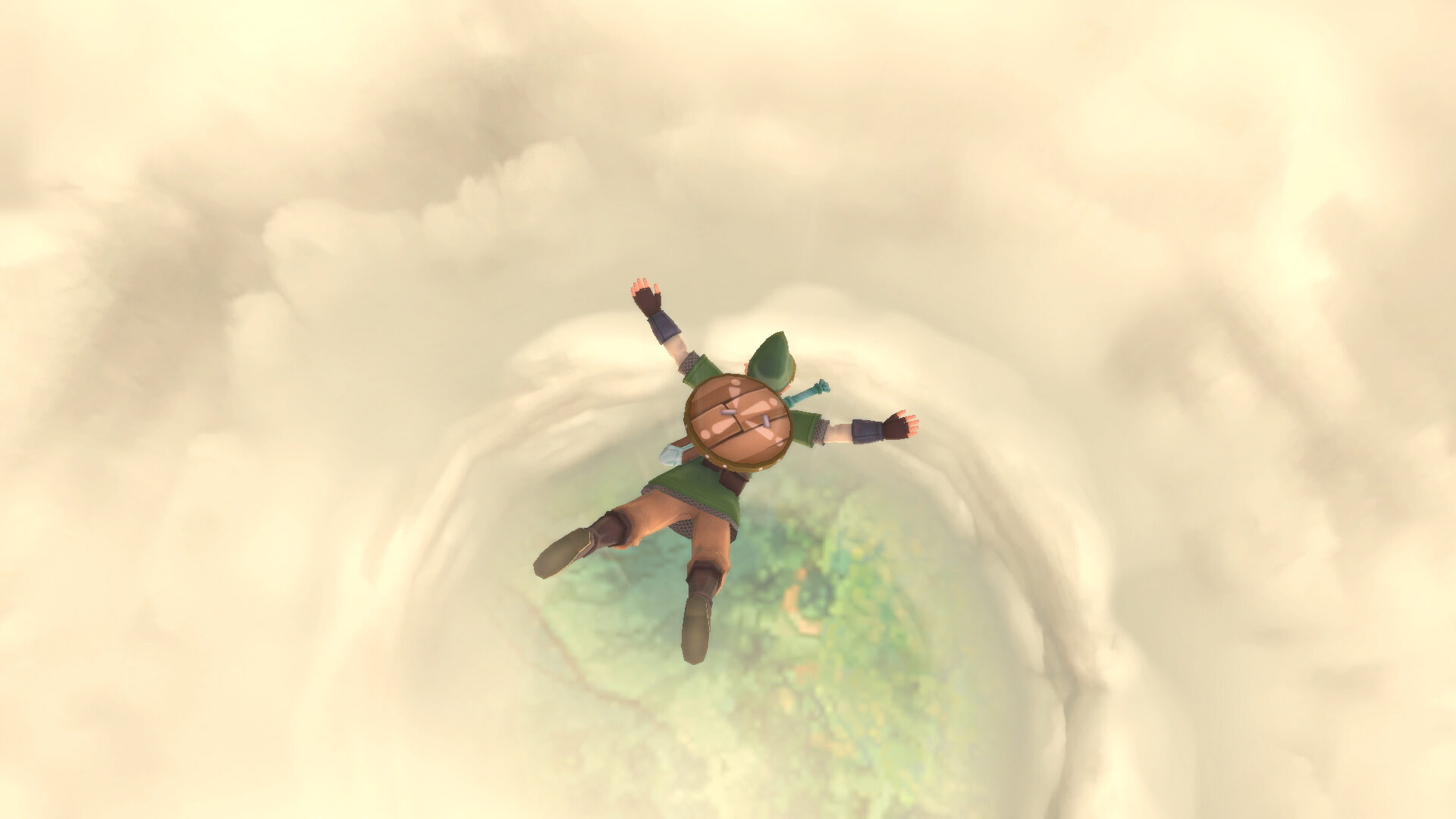
Images: Nintendo
|
★★★★★
The Legend of Zelda: Skyward Sword HD improves on the original in every conceivable way. The visual and performance upgrades make it feel like a new game, and the motion controls feel much more responsive, thanks to the Switch’s Joy-Cons. But the new button controls are the biggest improvement; instead of fighting against the motion controls, players can now savor the satisfying combat and genius level design. What was once the outcast of the 3D Zelda games now stands tall as one of the best in the series. |
Developer Nintendo Publisher Nintendo ESRB E10+ - Everyone 10+ Release Date 07.16.21 |
| The Legend of Zelda: Skyward Sword HD is available on Nintendo Switch. Primary version played was for Switch. Product was provided by Nintendo for the benefit of this coverage. EGM reviews on a scale of one to five stars. | |

Michael Goroff has written and edited for EGM since 2017. You can follow him on Twitter @gogogoroff.